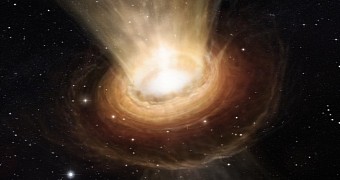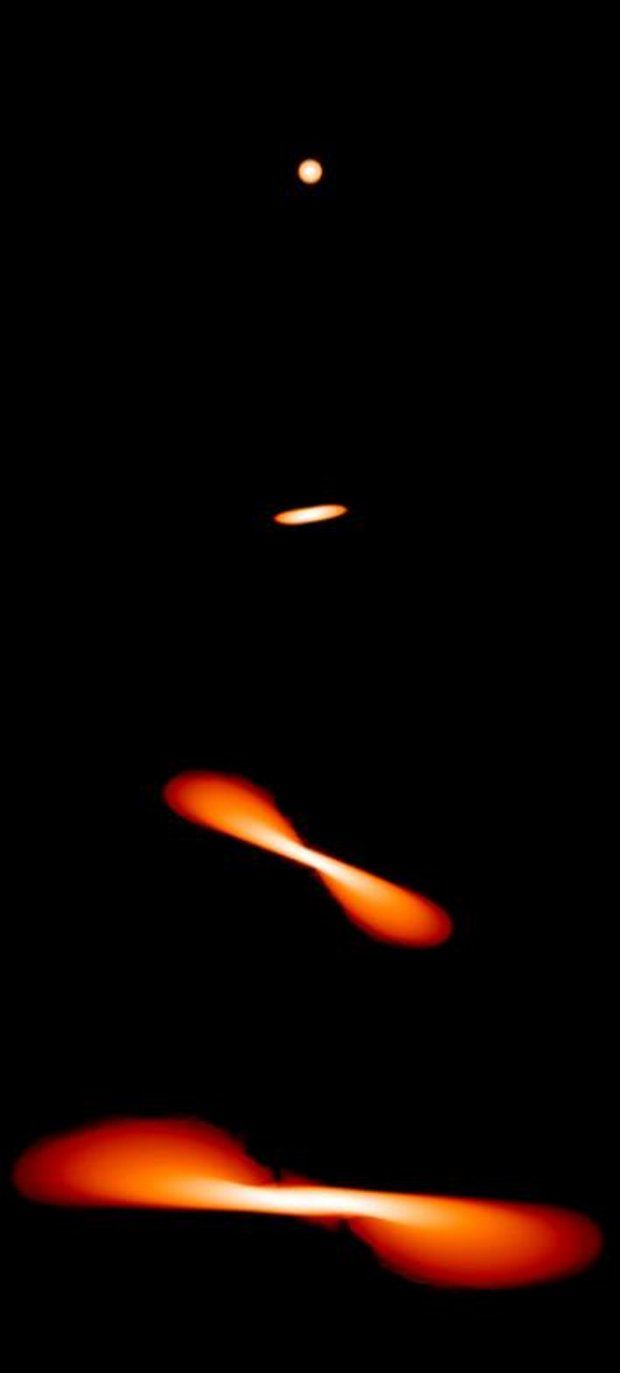Back in 2009, on January 21, a telescope at the McDonald Observatory in Texas, US, documented a freakishly bright flash out in the cosmos. Astronomers were quite intrigued by the occurrence and so spent the following years trying to make sense of this odd event.
In a paper published in this month's issue of the Astrophysical Journal, they argue that this bright flash that the telescope at the McDonald Observatory spotted in 2009 was likely the sight of a black hole trying to eat a star and choking on it.
Thus, data obtained with the help of plenty of other ground and space telescopes pointed in the direction of the flash following the initial capture with the help of the McDonald Observatory telescope indicates that the event was not a stellar explosion, a merger of two stars or a gamma-ray burst.
Hence, writing in the Astrophysical Journal, scientists argue that the odd 2009 event, dubbed ROTSE3 J120847.9+430121 but also known as “Dougie” after a South Park character, was a black hole trying to snack on a star and choking on it.
“We realized that this was something nobody really saw before. Finding out that it was probably a supermassive black hole eating a star was a fascinating experience,” said lead author Jozsef Vinko of the University of Szeged in Hungary, as cited by Phys Org.
According to this researcher and his colleagues, what probably happened was that, having pulled at one side of the star and managed to rip it apart, the black hole ended up causing its victim to unleash serious radiation that pushed back on it and caused it to choke.
Given its difficulties in swallowing its meal, astronomers suspect that the black hole responsible for the ROTSE3 J120847.9+430121 event of January 21, 2009, is rather small. Specifically, they estimate that it holds the mass equivalent of just a million stars like our Sun.

 14 DAY TRIAL //
14 DAY TRIAL // 

